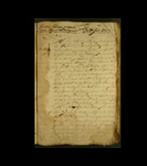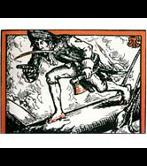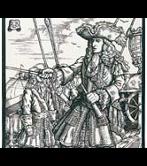Pirates and privateers
Gipuzkoa as a whole became a major focal point for privateers, especially for the privateer fleets that were sponsored by San Sebastián ship owners. Privateering was a legal activity, provided that the ship had a privateer's licence and its activities were aimed at the enemies of the signatory of the licence; that is to say, the king. During wartime, privateers were used as an auxiliary military resource. For shipowners it represented a risky investment, and one that was more profitable when the privateers were successful; for the privateers themselves, it was no doubt just another temporary job.
Privateering could basically be authorised in one of two ways: through a licence, which empowered them to engage in unlimited action against the enemy, or through a letter of reprisal, which was granted to shipowners that had in turn suffered attacks by enemy privateers, to enable them to redress their losses by the same means.
While the king’s legal authority to grant privateering licences was accepted in Gipuzkoa, the distribution of the booty caused numerous conflicts, and the people of Gipuzkoa made a legal bid to prevent the Captain General of the Province from participating in this distribution. Furthermore, there was great controversy over the subject of who could act as a privateer, or engage directly in war. In fact, the major decline in Basque privateering in the 16th century (and especially during the reign of Felipe II) was due to the fact that the king favoured large-scale privateering, practised directly by his navy. Even the Junta General (regional government) protested over the dubious legality of the actions of the general of the Zubiaur navy, whose fleet competed as privateers with non-military fleets. Similar complaints derived from the actions of the Cantabrian privateers of the Cuatro Villas (four towns). The fact that the protests took on an institutional nature shows the economic importance that privateering had.
During the 18th century, the revival of American trade through the Compañía de Caracas represented a new golden age for Guipuzcoan privateering, sponsored by the company in question in order to combat smuggling from its own fleet, and organised by the company itself. The Compañía de Caracas chartered boats with two sets of crews: one for trading purposes, the others being privateers or coastguards; it was the latter group – who confiscated goods captured from smugglers’ vessels – that proved to be more profitable.
Further information here: Corsair and Pirats (Bertan Collection)
http://bertan.gipuzkoakultura.net/es/5/




